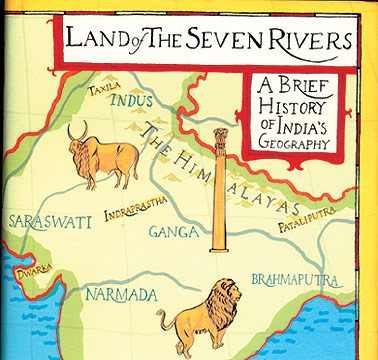We’re witnessing the growth of a new kind of historical narrative that is middle class, in a voice that is elitist. Sanjeev Sanyal’s book is a prime example of this.
The idea is an interesting one — to tell the history of the subcontinent and its unique cultural traditions in the context of the land’s geography. But from the cover down, the book is a deeply flawed one, and misleading. The cover marks out seven different rivers — the Indus, the mythical Saraswati, Ganga, Brahmaputra, Narmada, Krishna and Cauvery, suggesting a pan-sub continental view, but when the title appears in the second chapter, it turns out to be a conventional reference to the Sapta Sindhu. The book is obsessed with northern India — from making tenuous links between the Indus Valley Civilization and the Vedas to praising the growth of Gurgaon as the epitome of New India. The south of the country only finds mention in relation to its mercantile prowess in the medieval era, the Vijayanagara empire and the Portuguese. The Himalaya are not mentioned much, except in the context of the comically misspelt ‘McMohan’ Line. Similarly, the Brahmaputra makes a fleeting cameo as the site where the Ahoms defeated the Mughals.
The book’s view of history is also top-down. It is only interested in the broadest possible sweep, thus following a simple narrative of IVC-Rig Veda-Indraprastha-Mauryan dynasty-Gupta dynasty-Golden Age-Islamic conquest-1,000 years of decline-British Colonialism-Freedom struggle-socialist India (fail)-globalized India (pass). It’s a pat summation of India in a series of ‘talking points’.
India’s geography fits into all this only peripherally. All Sanyal does is mention places and tie the historical to the geographical. Thus, he mentions the fact that lakes like Pushkar dot the dry bed of the Ghaggar-Hakra river system, and says that this is proof of the mighty Saraswati. But that’s a known fact. Why write a book about it when you can add nothing to what Wikipedia already says about it? The book is rounded off with a pointless final chapter where Sanyal glorifies the middle class and technocracy, laments labour unions and celebrates ‘Munni Badnam Hui’. How is this a history of India’s geography?




